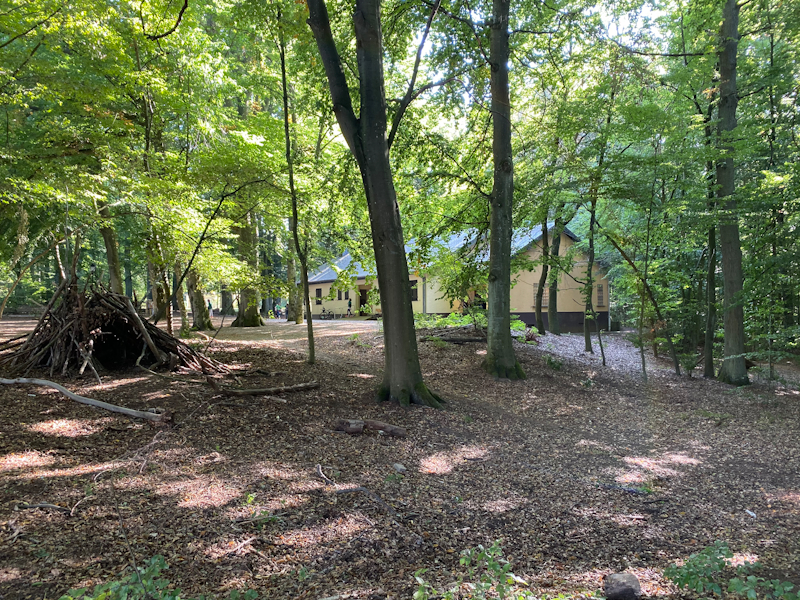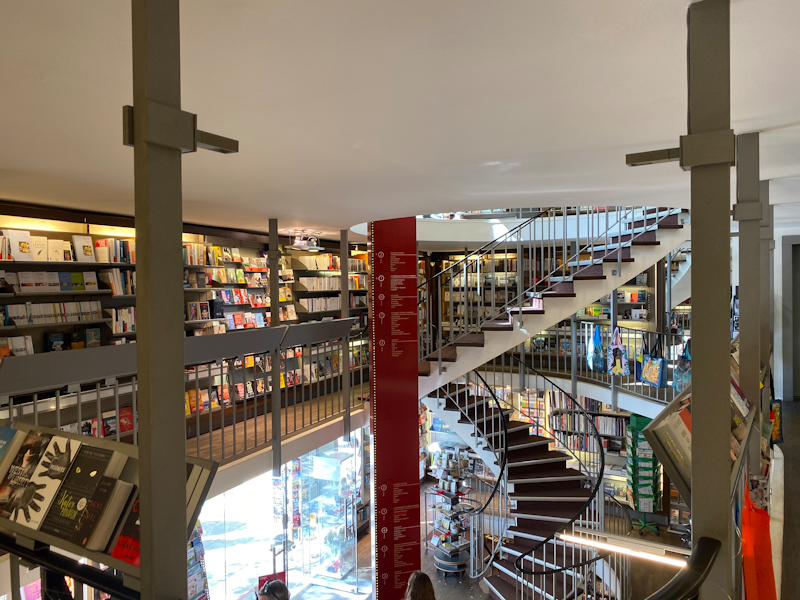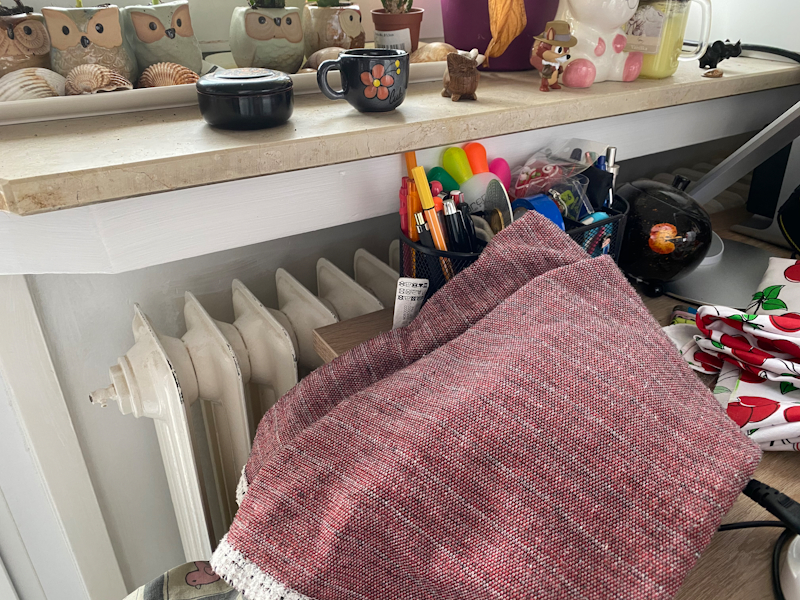The Apple iPhone 11, 11 Pro & 11 Pro Max Review: Performance, Battery, & Camera Elevated
by Andrei Frumusanu on October 16, 2019 8:30 AM ESTCamera - Daylight Evaluation Continued
We continue on with more HDR heavy shots as well as going into indoor shots.

[ iPhone 11 Pro ] - [ iPhone XS ] - [ iPhone X ]
[ S10+(S) ] - [ S10+(E) ] - [ Pixel 3 ]
[ P30 Pro ] - [ Xperia 1 ] - [ G8 ]
The first scene on this page showcases similar changes for the new iPhone 11: the new HDR is able to extract better detail and tone down the overexposed areas compared to the XS. Also very evident is the presence of more saturation in the trees, more accurately depicting their color.
The telephoto showcases the same SmartHDR changes as it’s able to better handle the highlights.
A very good showcase by the wide-angle camera in this scene – it’s among the best renditions.

[ iPhone 11 Pro ] - [ iPhone XS ] - [ iPhone X ]
[ S10+(S) ] - [ S10+(E) ] - [ Pixel 3 ]
[ P30 Pro ] - [ Xperia 1 ] - [ G8 ]
I’ve noticed a lot of phones have issues with this shot in terms of their color balance, as sometimes they tend to veer off too much in the grey. The new iPhone 11 Pro here improves in comparison to the XS as it’s able to more properly maintain the greens of the leaves.
The telephoto module takes advantage of a better color accuracy, but here’s extremely evident that it’s a downgrade in terms of detail compared to the XS.
The wide-angle is excellent in term of exposure, however detail is drastically lacking throughout the whole scene, as it’s quite a blurry mess, and very much lagging behind the S10, particularly the Exynos variant.

[ iPhone 11 Pro ] - [ iPhone XS ] - [ iPhone X ]
[ S10+(S) ] - [ S10+(E) ] - [ Pixel 3 ]
[ P30 Pro ] - [ Xperia 1 ] - [ G8 ]
Moving indoors with still quite good lighting, it’s again hard to tell apart the iPhone 11 from the XS. The 11 is a bit brighter but other than that they’re pretty much equal. The telephoto shots are also too close to clearly determine which one is better.
The wide-angle is good, but lacks the same sharpness as showcased on the S10. Apple here both on the main and wide-angle seems to have a limited dynamic range compared to the Samsung, as evidenced by the blown out outdoors part of the shot.

[ iPhone 11 Pro ] - [ iPhone XS ] - [ iPhone X ]
[ S10+(S) ] - [ S10+(E) ] - [ Pixel 3 ]
[ P30 Pro ] - [ Xperia 1 ] - [ G8 ]
The local tone mapping of the HDR of the iPhone 11 improved a bit on the XS, however it’s still not handling some elements correctly, and blowing out the stained glass as well as the orange commercial sign on the left, both which certainly weren’t that bright.
The telephoto on the 11 is a lot better in this shot and the legibility of the signage is definitely better.

[ iPhone 11 Pro ] - [ iPhone XS ] - [ iPhone X ]
[ S10+(S) ] - [ S10+(E) ] - [ Pixel 3 ]
[ P30 Pro ] - [ Xperia 1 ] - [ G8 ]
In indoor shoots again for the main camera it’s a wash between the 11 and the XS. In some areas the 11 fares better while on other textures the XS seems sharper. Both the phones however had issues with color temperature as it’s too warm.
Portrait Mode

[ iPhone 11 Pro ]
[ iPhone XS ] - [ iPhone X ]
[ Galaxy S10+ (E) ] - [ Galaxy S10+ (S) ]
For portrait pictures, the big new addition for the iPhone 11 series is that you can now capture with the main camera sensor while the wide-angle serves as the depth sensor. It’s still possible and sometimes maybe preferable to use the telephoto lens for portrait shots.
The problem is that it seems that Apple hasn’t really improved the segmentation algorithm on the new iPhones and things can be relatively imperfect. This is particularly visible in the wider-angle shots with the “whiteout” effect, and the results just aren’t very good.
The fun thing about this scene with the swing is we can see the gradual effects of the bokeh on the ropes – that is, we can see that it’s not very gradual on the iPhones as we can clearly delineate where different levels of bokeh blur are applied. This is also partly visible on the Exynos S10, but the Snapdragon S10 has excellent segmentation as well as a smooth and gradual 3D depth blur.
iOS 13.2 Deep Fusion
I had started off the review with iOS 13 including most the daylight pictures, after which I switched over to iOS 13.1 for most testing. Finally, Apple had released a beta for iOS 13.2 and I had to take a look at the new Deep Fusion feature and how it behaves.

[ iPhone 11 Pro iOS 13.2 ]
[ iPhone 11 Pro iOS 13.1.2 ]
[ Galaxy S10+ (E) ]
I was rather shocked to see the difference in detail that the new Deep Fusion feature can make, and you definitely don’t even have to view the pictures at full resolution to notice a difference in sharpness as well as increased detail.
Essentially Deep Fusion should work similarly to Google’s super resolution zoom technology, just Apple is using it to increase the amount of details captured at the full frame resolution. With the feature enabled the camera is able to bring out finer textures in textiles or rougher materials with fine-grained details that otherwise were blurred out by the camera.
I tried a few shots outdoors, however as Apple mentioned it doesn’t seem to work in coordination with Smart HDR and the last comparison shot doesn’t really show any major difference in detail between iOS 13.1 and 13.2.
Daylight Camera Capture Conclusion – Wait for Deep Fusion retake?
The main selling point of the new iPhones was the addition of the ultra-wide-angle camera module. Indeed, this opens up a totally new capture experience for users and I do think it makes a lot of sense to retain this module on the regular iPhone 11 rather than having a telephoto module. The wide-angle camera had been pioneered by LG a few generations ago, but last year it was Huawei which brought it to the mainstream. And now in 2019 it’s been a must-have for every vendor, and it would have been shocking if Apple hadn’t adopted it.
Quality-wise, Apple's wide-angle module does adequately well, as it’s definitely one of the better modules out there. Still, there’s been many shots where the pictures ended up notably less sharp than on the Galaxy S10 or Huawei’s phones. HDR had also been a bit better for the competition in some scenarios.
On the main camera, improvements for this generation were relatively muted when it comes to the daylight results. There just isn’t very much difference to the XS. We do note that the color temperature is slightly improved, saturation is sometimes more accurately captured, and HDR is able to now handle highlights better. Still I had expected a bit more – sometimes the competition is able to showcase better dynamic range and thus capture more of a scene. The level of detail between the iPhone 11 series and the XS are essentially identical.
The telephoto module changes on the 11 Pro are a bit odd. A lot of the scenes showcased the new phone as producing noisier shots or just having less detail. The optics of the module have changed, as it moved from an f/2.4 aperture to an f/2.0, so I do wonder if that’s the reason for the discrepancy. Sometimes the new module wins out, but other times there isn’t any improvement or even slight regressions. It’s not a deal-breaker or a problem at all, but it’s still odd to see this development from Apple.
Portrait mode on the main sensor is a new addition to the camera experience, but the issue is that Apple really hasn’t improved its segmentation and depth sensing capabilities. Qualcomm’s ISP here looks to be superior as it’s able to produce better bokeh effects.
Finally, Deep Fusion could very well be a game-changer for the camera. I was extremely surprised by the increased quality in sharpness and detail that the new mode brings. I didn’t have sufficient time to properly evaluate it in a wider range of scenarios and against more phones, but it could very well be one of the features that puts the iPhone 11 series ahead of other phones. It’s something we definitely have to revisit in the upcoming Pixel 4 and Mate 30 Pro reviews as we redo the whole camera comparison with iOS 13.2.










242 Comments
View All Comments
Irish910 - Friday, October 18, 2019 - link
Why so salty? If you hate Apple so much why are you here reading this article? Sounds like you’re insecure with your android phone which basically gets mopped up with by the new iPhones in every area where it counts. Shoo shoo now.shompa - Thursday, October 17, 2019 - link
Desktop performance. Do you understand the difference between CPU performance and App performance? X86 has never had the fastest CPUs. They had windows and was good enough / cheaper than RISC stuff. The reason why for example Adobe is "faster" in X86 is that Intel adds more and more specific instructions AVX/AVX512 to halt competition. Adobe/MSFT are lazy companies and don't recompile stuff for other architectures.For example when DVD encoding was invented in 2001 by Pioneer/Apple DVD-R. I bought a 10K PC with the fastest CPU there was. Graphics, SCSI disks and so on. Doing a MPEG 2 encoding took 15 hours. My first mac was a 667mhz PowerBook. The same encoding took 90 minutes. No. G4 was not 10 times faster, it was ALTIVEC that intel introduced as AVX when Apple switched to Intel. X86 dont even have real 64bit and therefore the 32bit parts in the CPU cant be removed. X86 is the only computer system where 64bit code runs slower than 32bit (about 3%). All other real 64bit systems gained 30-50% in speed. And its not about memory like PC clickers belive. Intel/ARM and others had 38bit memory addressing. That is 64gig / with a 4gig limit per app. Still, today: how many apps use more than 4gig memory? RISC went 64bit in 1990. Sun went 64bit / with 64bit OS in 1997. Apple went 64bit in 2002. Windows went 64bit after Playstation4/XboxOne started to release 64bit games.
By controlling the OS and hardware companies can optimize OS and software. That is why Apple/Google and MSFT are starting to use own SoCs. And its better for customers. There are no reason a better X86 chip cost 400 dollars + motherboard tax 100 dollars. Intel 4 core CPUs 14nm cost less than 6 dollars to produce. The problem is customers: they are prepared to pay more for IntelInside and its based on the wrong notion "its faster". The faster MSFT moves to ARM / RISCV. The better. And if the rumors are right, Samsung is moving to RISCV. That would shake up the mobile market.
Quantumz0d - Thursday, October 17, 2019 - link
Samsung just killed Texas team funding. And you don't want to pay for a socketed board and industry standard but rather have a surfacw which runs on an off the shelf processor and has small workload target in a PC ?Also dude from where you are pulling this $6 of Intel CPUs and I presume you already know how the R&D works right in Lithography ? ROI pays off once the momentum has began. So you are frustrated of 4C8T Intel monopoly amd want some magical unicorn out of thin air which is as fast that and is cheap and is portable a.k.a Soldered. Intel stagnated because of no competition. Now AMD came with better pricing and more bang for buck.
Next from Bigroom Mainframes to pocket PC (unfortunate with iOS its not because of no Filesystem anf Google following same path of Scoped Storage) microsoft put computers in homes and now they recently started moving away into SaaS and DaaS bs. And now with thin client dream of yours Itll be detrimental to the Computer HW owners or who want to own.
We do not want a Propreitary own walled gardens with orwellian drama like iOS. We need more Linux and more powerful and robust OS like Windows which handles customization despite getting sandbagged by M$ on removing control panel slowly and migrating away from Win32. Nobody wants that.
https://www.computerworld.com/article/3444606/with...
jv007 - Wednesday, October 16, 2019 - link
The lighting big cores are not very impressive this time.From 4 Watt to 5 Watt a 25% increase in power for 17% more performance.
Good for benchmarks (and the phone was actively cooled here), but not good for throttling.
7nm and no EUV, maybe next year with 5nm and EUV will improve seriously.
I wonder if we will see a A13X.
name99 - Wednesday, October 16, 2019 - link
"The lighting big cores are not very impressive this time"A PHONE core that matches the best Intel has to offer is "not impressive"?
OK then...
Total Meltdowner - Thursday, October 17, 2019 - link
Comparing this CPU to intel is silly. They run completely different instructions.Quantumz0d - Sunday, October 20, 2019 - link
It has been overblown. The Spec score is all the A series chips have. They can't replace x86 chips even Apple uses x86 cores with Linux RHEL or Free OS Linux distribution to run their services. Whole world runs on the same ISA. These people just whiteknight it like a breakthrough while the whole iOS lacks basic Filesystem access and the latest Catalina cannot run non notarized apps.Also to note the Apple First party premium optimization, that Apple pays for companies like Adobe. If you run MacOS / Trashbook Pro BGA / iOS on any non optimized SW it will be held back both on power consumption and all. It's just a glorified Nix OS and with the first party support it keeps floating. They missed out on the mass scale deployment like Windows or Linux and that's going to be their Achilles heel along with the more transformation of MacOS into iOS rather than opposite.
It's really funny when you look how 60% of the performance is max that one can get from MacOS based HW/Intel machines due to severe thinning on chassis for that sweet BGA appeal and non user serviceable HW while claiming all recycled parts and all. I'm glad that Apple can't escape Physics. VRM throttling, low quality BGA engineering with cTDP garbage etc. Also people just blatantly forget how the DRAM of those x86 processors scales with more than 4000MHz of DDR4 and the PCIe lanes it pushes out with massive I/O while the anemic trash on Apple Macs is a USB C with Dongle world, ARM replicating the same esp the Wide A series with all the Uncore and PCIe I/O support ? Nope. It's not going to happen. Apple needs to invest Billions again and they are very conservative when it comes to this massive scale.
Finally to note, ARM cannot replace x86. Period. The HPC/ DC market of the Chipzilla Intel and AMD, they won't allow for this BS, Also the ISA of x86 is so mature plus how the LGA and other sockets happen along. While ARM is stuck with BGA BS and thus they can never replace these in the Consumer market.
Let the fanboys live in their dream utopia.
tipoo - Thursday, October 17, 2019 - link
Being that the little cores are more efficient, and the battery is significantly larger, maybe they allowed a one time regresion in peak performance per watt to gain that extra performance, without a node shrink this year.zeeBomb - Wednesday, October 16, 2019 - link
the time has come.joms_us - Wednesday, October 16, 2019 - link
Show us that A13 can beat even the first gen Ryzen or Intel Skylake , run PCMark, Cinebench or any modern games otherwise this nonsense desktop level claim should go to the bin. You are using a primitive Spec app to demonstrate the IPC?I can't wait for Apple to ditch the Intel processor inside their MBP and replace with this SoC. Oh wait no, it won't happen in a decade because this cannot run a full pledge OS with real multi-tasking. =D